Veterinary Care for Wildlife
The Rowena Wildlife Clinic is located near an interstate highway, two major railways, and many tourist attractions. It is no wonder that most of our patients arrive with broken bones.
A cormorant hit by a car

The humerus was broken.
Here is a typical case. It was a Double Crested Cormorant, admitted from Wildlife Rehabilitation Center of the North Coast (WRCNC), in Aug. 2003.
He was hit by car and broke the upper portion of his humerus. Luckily, the skin was intact, so the bone was protected from drying and contamination.
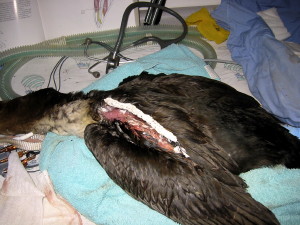
After surgery.
This photo was taken as he was recovering from anesthesia, after a pin was placed through the length of the bone for alignment, and several others were used perpendicular to the bone, for stability, with heat-sensitive plastic casting material tying all the pins together, like an external splint.
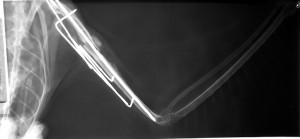
The pins are visible in the x-ray.
He was hospitalized indoors for 4 weeks, with several sessions of bandage changes and physiotherapy to keep his wing supple. Like most fish-eaters, he bit us at every opportunity, and he never ate a meal by himself!
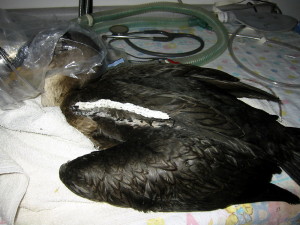
A final operation to remove the pins.
By mid-September, the pins could be removed. (Note the plastic bag, our gas anesthesia aid; Cormorant beaks are too long even for canine anesthesia masks.) We returned him to WRCNC, where he was eventually released.
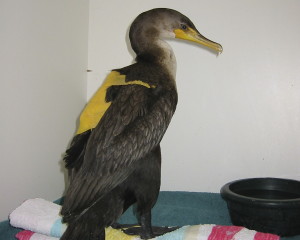
Recuperating
A skunk burned in a brush fire
Fires are common in our area. This skunk was caught in a brush fire at a state park.
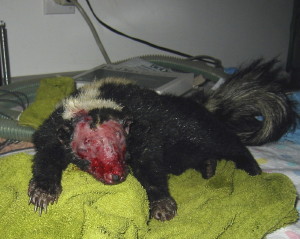
Her face was badly burned.
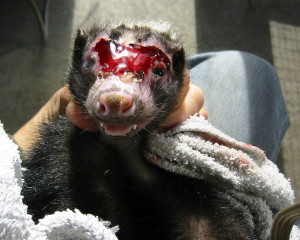
Halfway there.
Here she is under anesthesia the first day, when we flushed her wounds and applied a collagen-based burn dressing to her face.
After a pungent 3 week hospital stay, she was ready to move to an outdoor enclosure, from which she was soon released.
A fawn hit by a car
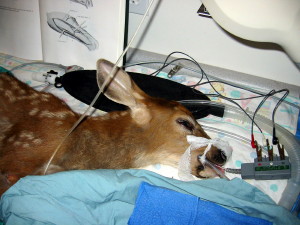
Under anesthesia.

Pinning the bone.
This fawn was hit by a car in July 2005. It had a broken tibia. Fortunately, as with the cormorant, the skin was intact and protected the bone. We placed a pin through the bone to align it, and applied a light cast for stabilization.

A meal, post-op.
The fawn recovered uneventfully and was released with several other orphans that autumn.
A prairie falcon blood transfusion
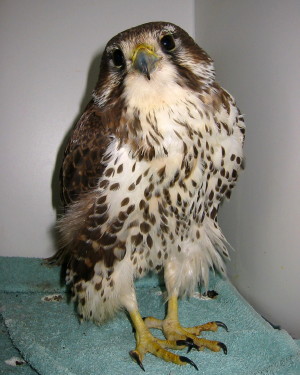
Initially she was too weak to be operated on.
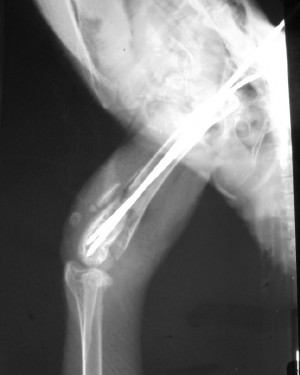
An xray of her leg.
On admission, her femur was broken, and she was extremely weak and pale. The broken end of the bone had lacerated the femoral artery, causing internal bleeding. Luckily one of our volunteers, Glen, had a prairie falcon in training who was willing to donate blood. The transfusion was a success, and two days later we were able to anesthetize her and repair the leg. She was ready for release that spring.